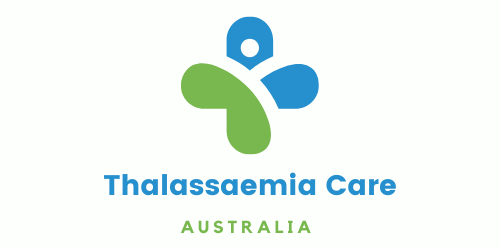Osteoarthritis affects millions, causing pain and limiting mobility. Many seek relief through various treatments, but physiotherapy has emerged as a promising option. This article explores how targeted exercises and tailored therapies can alleviate symptoms and improve quality of life for those living with this chronic condition.
Understanding Osteoarthritis
Osteoarthritis affects millions, leading to pain and restricted movement. This degenerative joint disease occurs when cartilage breaks down, causing bones to rub together.
What Is Osteoarthritis?
Osteoarthritis (OA) is a common joint condition, primarily affecting weight-bearing joints like the knees, hips, and spine. It involves the degeneration of cartilage, which cushions joints. Over time, the loss of cartilage results in inflammation, pain, and stiffness. OA arises gradually, typically in older individuals, but can also develop after joint injuries or in people with a family history of the disease.
Symptoms and Causes
Symptoms of osteoarthritis include:
- Joint Pain: Pain worsens during or after movement.
- Stiffness: Particularly noticeable after periods of inactivity or in the morning.
- Swelling: Inflammation can cause joints to appear enlarged.
- Loss of Flexibility: Joints may become less mobile.
- Bone Spurs: Extra bone growth might develop around affected joints.
- Age: The risk increases with age due to cumulative wear on joints.
- Obesity: Excess weight adds stress to weight-bearing joints.
- Injuries: Previous joint injuries can lead to OA.
- Genetics: A family history raises susceptibility.
- Overuse: Repetitive stress from certain occupations or activities can contribute to wear and tear.
Role of Physiotherapy in Osteoarthritis

Physiotherapy plays a crucial role in managing osteoarthritis, focusing on reducing symptoms and improving physical function. By implementing tailored techniques, physiotherapy addresses pain and mobility restrictions linked to the condition.
Techniques Used in Physiotherapy
- Manual Therapy: This involves hands-on techniques aimed at reducing pain and improving joint function. Techniques include joint mobilisation and manipulation, which enhance movement and alleviate stiffness.
- Exercise Therapy: Customised exercise programmes focus on strengthening muscles surrounding affected joints. Low-impact activities such as swimming, cycling, and specific stretches help maintain joint flexibility and increase overall strength.
- Modalities: Physiotherapists may use heat, cold, or electrical stimulation to manage pain and reduce inflammation. These modalities promote circulation and expedite recovery processes.
- Education: Physiotherapists provide guidance on joint protection techniques and lifestyle modifications. Understanding proper body mechanics aids in managing symptoms and preventing further joint damage.
Benefits of Physiotherapy
- Pain Relief: Physiotherapy helps reduce discomfort through various techniques, enhancing the overall quality of life.
- Increased Mobility: tailored exercise programmes improve flexibility and range of motion, promoting ease in daily activities.
- Strength Development: Targeted exercises strengthen surrounding muscles, leading to better joint support and functionality.
- Balance and Coordination: Physiotherapy improves balance, reducing the risk of falls and contributing to increased confidence in mobility.
- Personalised Approach: Treatment plans cater to individual needs, addressing specific challenges faced by those with osteoarthritis. This customisation enhances adherence and effectiveness.
- Education and Self-Management: Knowledge gained through physiotherapy enables individuals to manage their condition effectively, empowering them to continue an active lifestyle.
Evidence Supporting Physiotherapy
Physiotherapy demonstrates significant benefits for individuals with osteoarthritis. Numerous studies highlight its role in managing pain and improving joint function.
Recent Studies and Findings
Recent research underscores the effectiveness of physiotherapy in treating osteoarthritis. A systematic review published in the Annals of Internal Medicine analysed 39 studies, concluding that physiotherapy significantly reduces pain and enhances physical function compared to control groups. An additional study in Osteoarthritis and Cartilage found that tailored exercise programmes led to notable improvements in mobility among participants with knee osteoarthritis. Evidence suggests that combining manual therapy with exercise enhances outcomes, particularly in reducing stiffness and increasing joint range.
Patient Testimonials
Patient experiences reinforce the positive impact of physiotherapy. Many individuals report substantial pain relief and improved mobility after completing treatment programmes. For example, a patient with hip osteoarthritis noted a 60% reduction in pain levels and regained the ability to walk without a cane after attending regular physiotherapy sessions. Another patient highlighted the increased confidence in daily activities, such as climbing stairs and participating in community events, following targeted physiotherapy interventions. These testimonials corroborate clinical findings, demonstrating physiotherapy’s ability to enhance quality of life for individuals with osteoarthritis.
Comparing Physiotherapy to Other Treatments
Physiotherapy provides an effective alternative to traditional treatments for osteoarthritis. Understanding its relative effectiveness compared to medications and surgery is essential for informed decision-making.
Physiotherapy vs. Medication
Physiotherapy targets the underlying issues of osteoarthritis through physical interventions, while medications often address symptoms like pain and inflammation. Nonsteroidal anti-inflammatory drugs (NSAIDs) such as ibuprofen may offer temporary relief but carry risks of side effects like gastrointestinal issues and cardiovascular problems. In contrast, physiotherapy promotes long-term benefits, focusing on improving mobility, strength, and overall joint function. A systematic review found that physiotherapy not only reduces pain significantly but also enhances physical function, providing a non-invasive option with fewer associated risks.
Physiotherapy vs. Surgery
Surgery typically serves as a last resort for severe cases of osteoarthritis when other treatments fail. Surgical options such as arthroscopy or joint replacement can be effective but often involve significant recovery times and potential complications. Physiotherapy serves as a first-line approach, helping many individuals manage their symptoms effectively without undergoing surgery. Research indicates that targeted exercise and manual therapy can improve joint health and delay the need for surgical interventions in many cases. Patients who engage in physiotherapy often report better pain management and improved quality of life, making it a preferable option before considering surgical solutions.
Conclusion
Physiotherapy stands out as a vital component in managing osteoarthritis. Its focus on tailored exercises and therapies not only alleviates pain but also enhances mobility and overall quality of life. By addressing the root causes of the condition physiotherapy empowers individuals to regain control over their daily activities.
With evidence supporting its effectiveness physiotherapy offers a safe and sustainable alternative to medications and invasive procedures. For those living with osteoarthritis embracing physiotherapy can lead to significant improvements in both physical function and emotional well-being. It’s clear that incorporating physiotherapy into an osteoarthritis management plan can yield lasting benefits.
Frequently Asked Questions
What is osteoarthritis?
Osteoarthritis is a degenerative joint disease that primarily affects weight-bearing joints such as the knees, hips, and spine. It results from cartilage breakdown, leading to joint inflammation, pain, stiffness, and decreased flexibility.
What are common symptoms of osteoarthritis?
Common symptoms include joint pain, stiffness, swelling, and reduced range of motion. Individuals may also experience the development of bone spurs and a general feeling of joint discomfort, especially after periods of inactivity.
What are the main risk factors for osteoarthritis?
The primary risk factors include age, obesity, previous joint injuries, genetic predisposition, and repetitive stress from certain activities. These factors can contribute to the wear and tear of joints over time.
How can physiotherapy help with osteoarthritis?
Physiotherapy can alleviate symptoms and improve function through tailored exercises, manual therapy, and education on joint protection. It aims to relieve pain, enhance mobility, and promote overall well-being, allowing individuals to maintain an active lifestyle.
What techniques are used in physiotherapy for osteoarthritis?
Common techniques include manual therapy, exercise therapy, heat and electrical stimulation modalities, and patient education on joint protection. These methods help manage pain and improve joint function.
Are there studies supporting physiotherapy for osteoarthritis?
Yes, systematic reviews, including one published in the Annals of Internal Medicine, demonstrate that physiotherapy significantly reduces pain and improves physical function compared to control groups, highlighting its effectiveness in managing osteoarthritis.
How does physiotherapy compare to other treatments for osteoarthritis?
While medications like NSAIDs offer temporary relief, physiotherapy addresses underlying issues, promoting long-term benefits without the side effects associated with drugs. It is often a first-line approach, helping delay the need for surgical treatments.
Can physiotherapy improve the quality of life for osteoarthritis patients?
Absolutely. Many patients report better pain management and enhanced quality of life after engaging in physiotherapy, as it empowers them to manage symptoms more effectively and maintain their activity levels.
